The National Rock Garden will celebrate Australia’s rich geological heritage in a parkland setting within the national capital, with a permanent display, showcasing the diversity of the rocks, and minerals that contribute so significantly to the nation’s landscapes, heritage and prosperity.
The foundation stones are still all that mark the National Rock Garden site, just off Lady Denman Drive on the northwestern shores of Lake Burley Griffin in Canberra, but much is happening behind the scenes to bring the project to fruition.
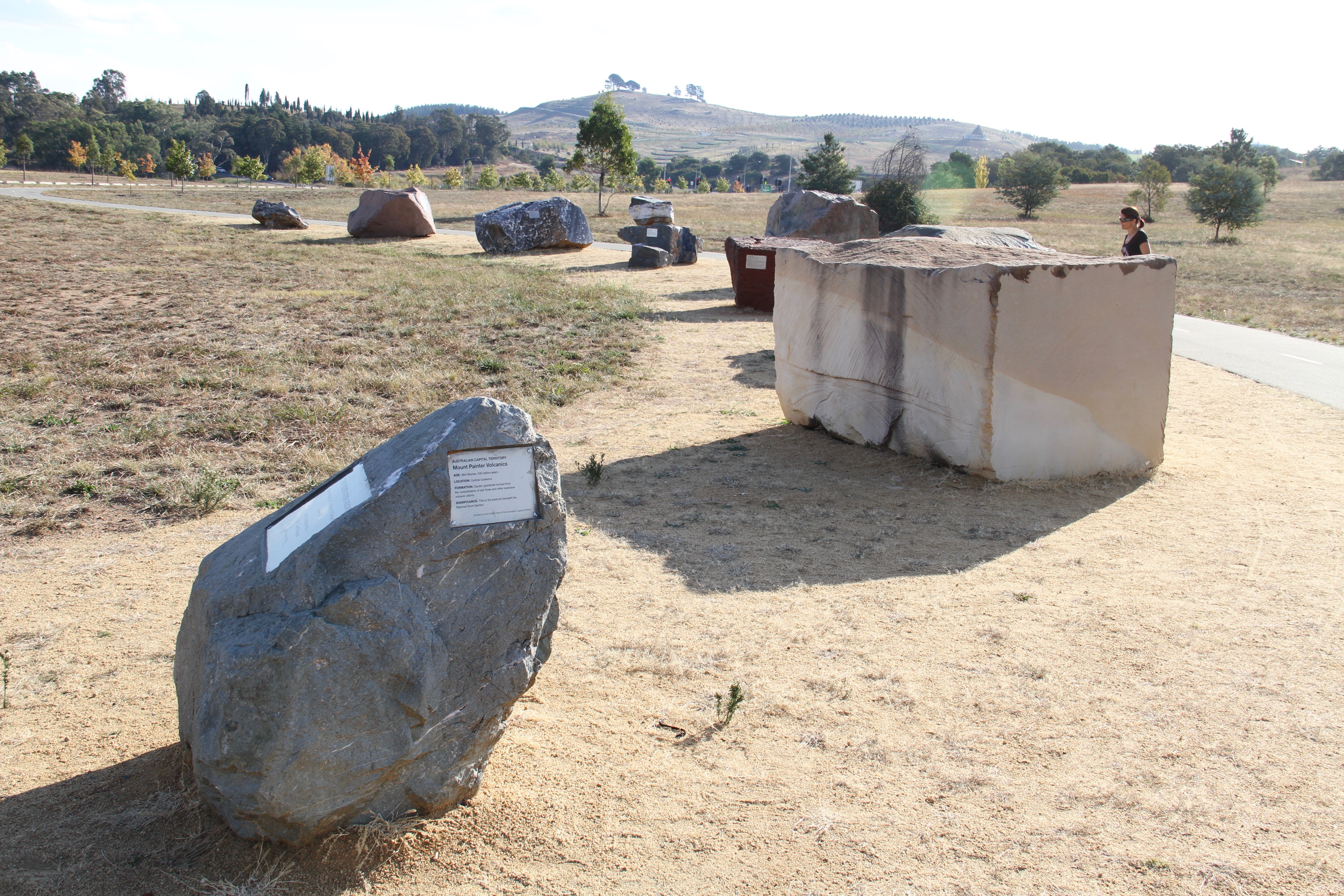
The National Rock Garden’s foundation stones mark the project site.
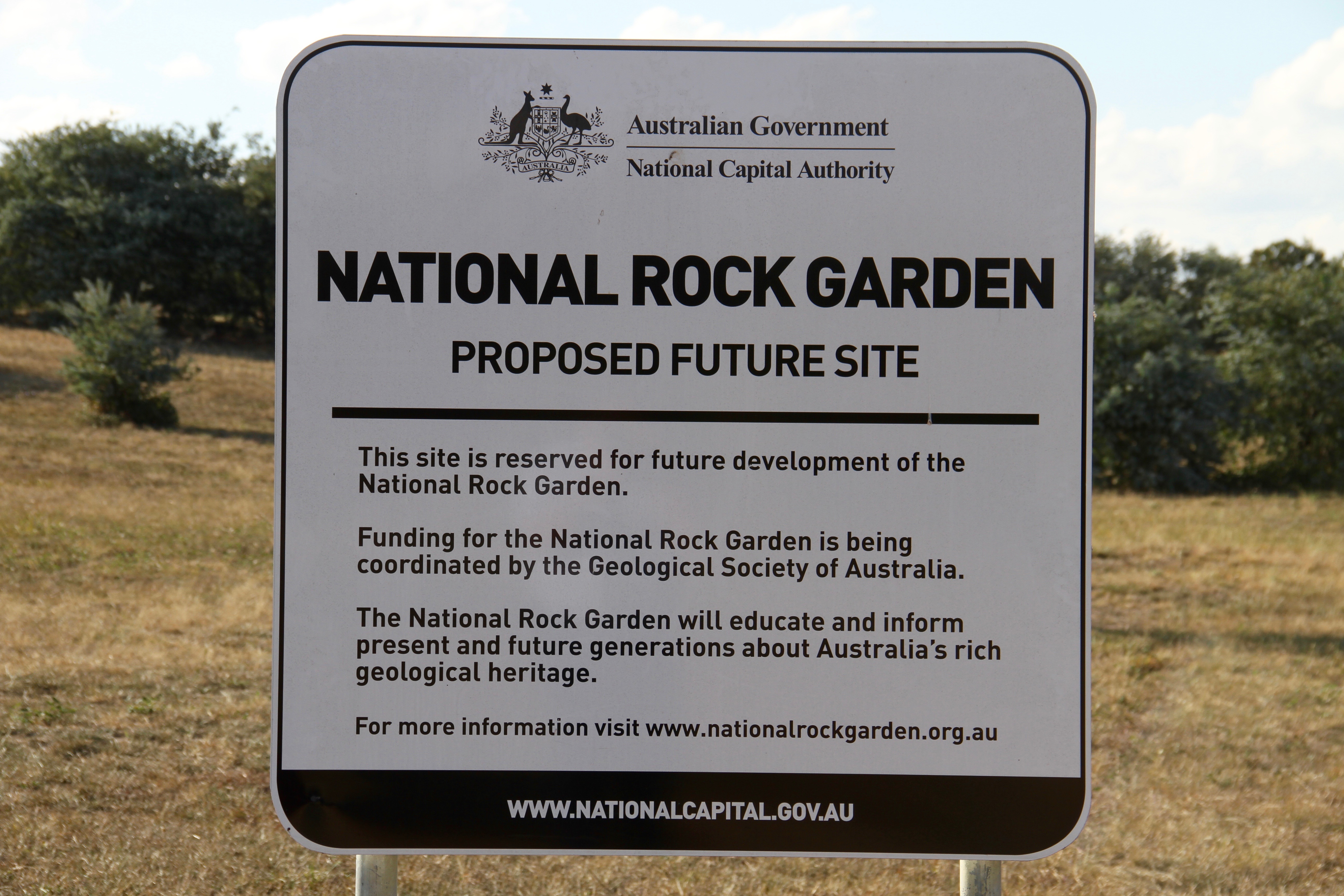
This sign outlines the project’s objectives to visitors.
A major aim of the National Rock Garden in the ACT is to promote earth science education to the general public, but particularly to school groups. Initial discussions with science educators from the Australian Science Teachers Association, CSIRO Discovery Centre and Geoscience Australia indicate that the NRG will be highly regarded and frequently visited, particularly by organised tours of school children and their teachers.
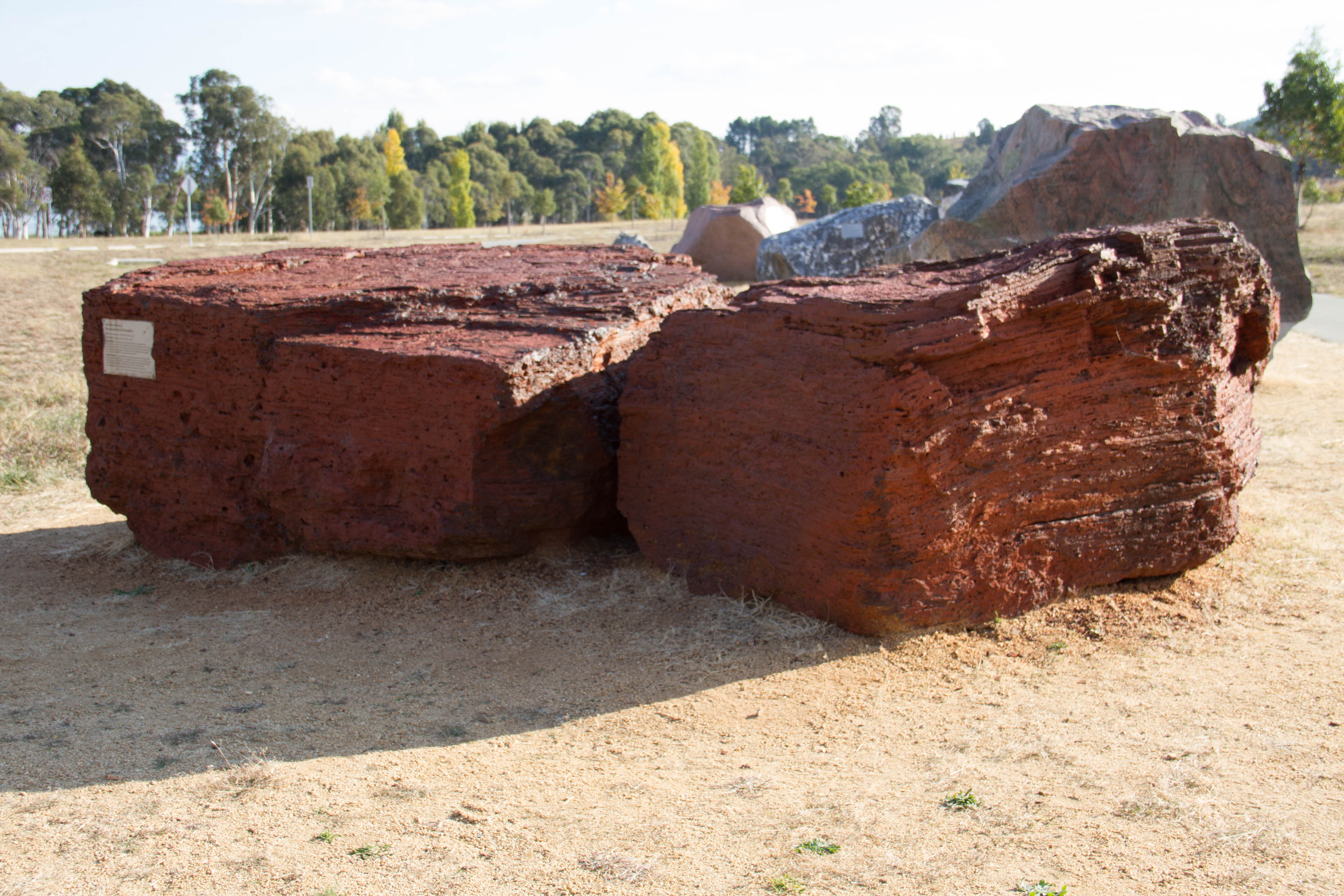
Brockton Iron Formation from Western Australia’s Pilbara region.
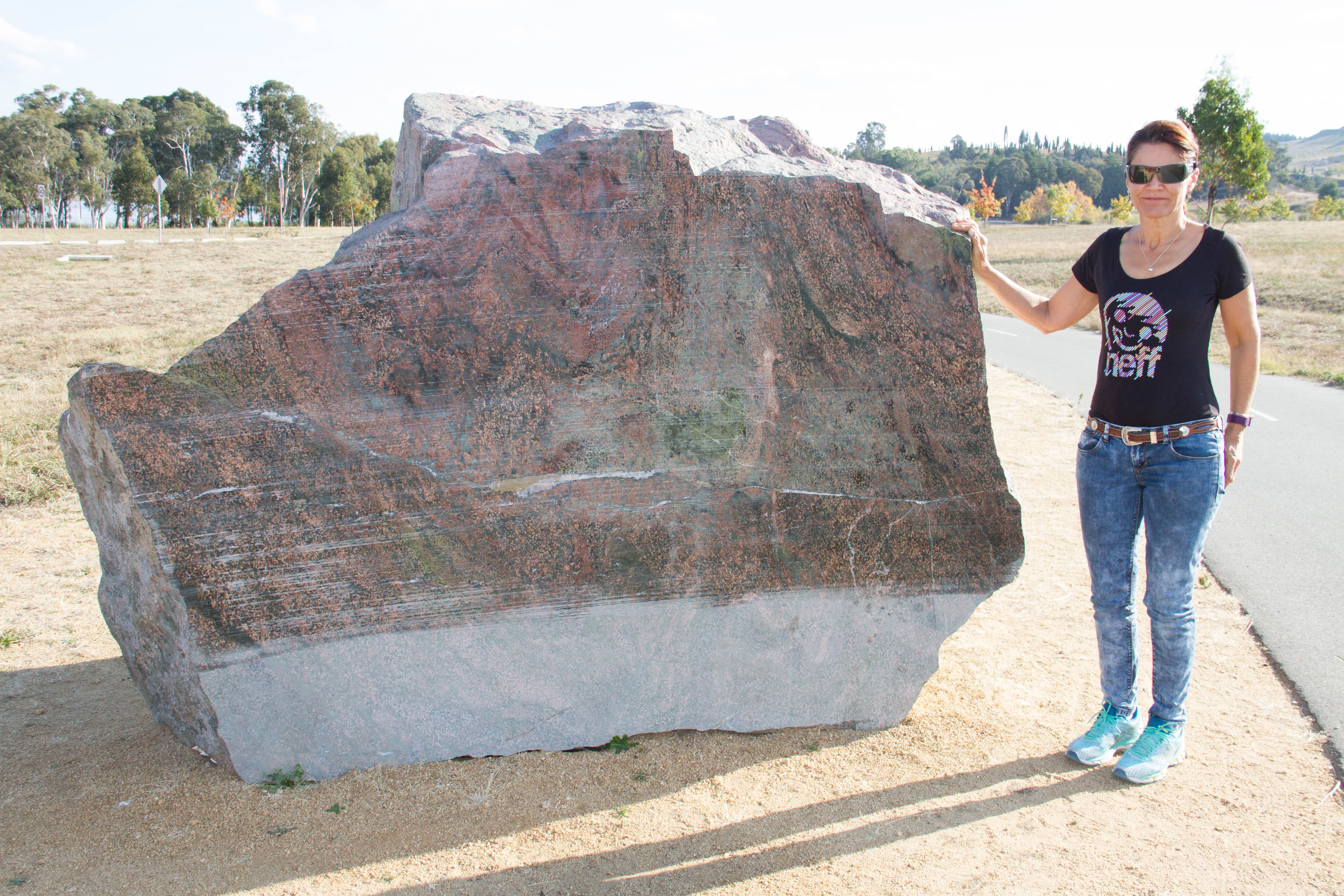
Oorlano Metasomatise from South Australia’s Yorke Peninsula.
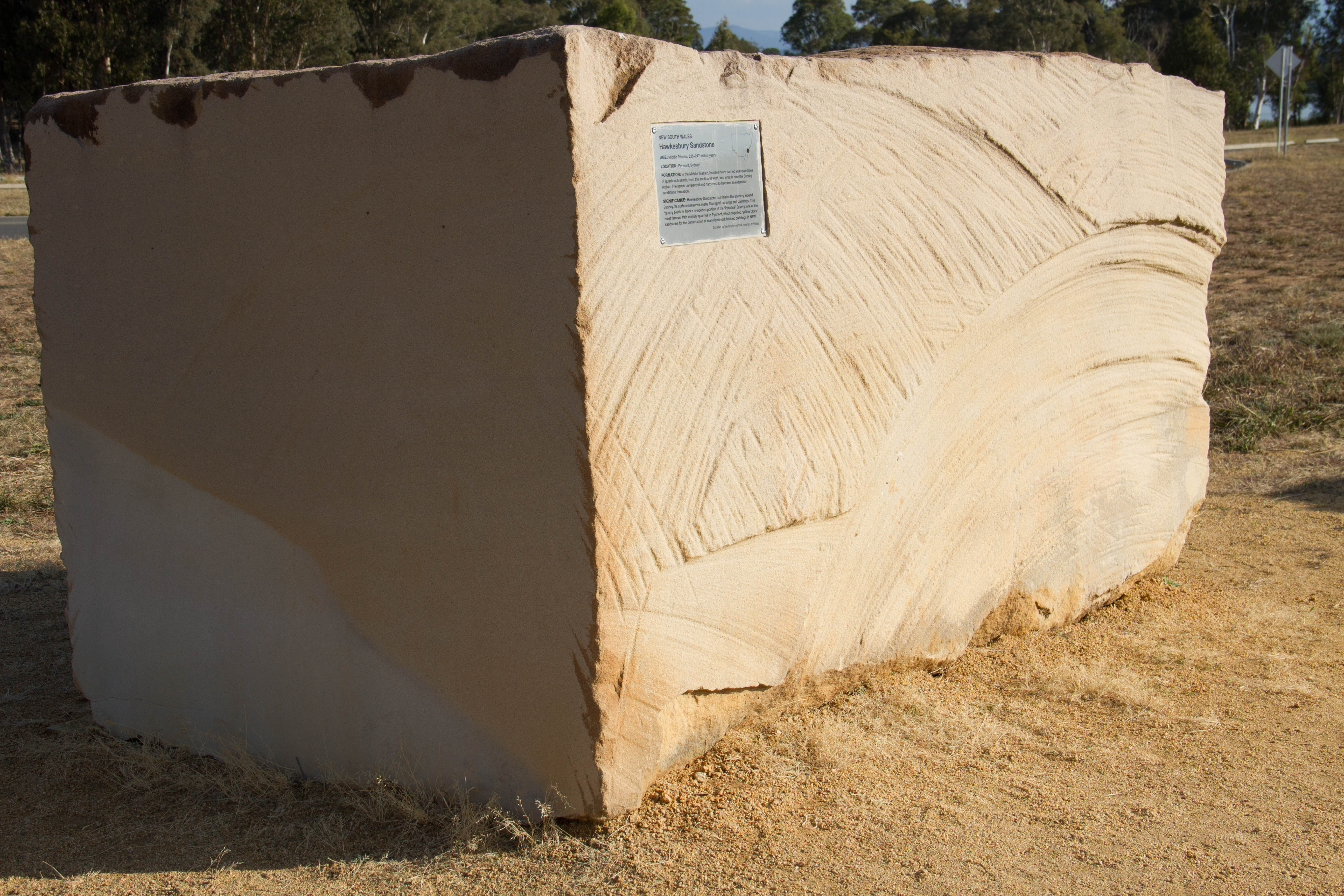
Hawkesbury Sandstone which forms the spectacular coastal cliffs of the Sydney region, New South Wales.
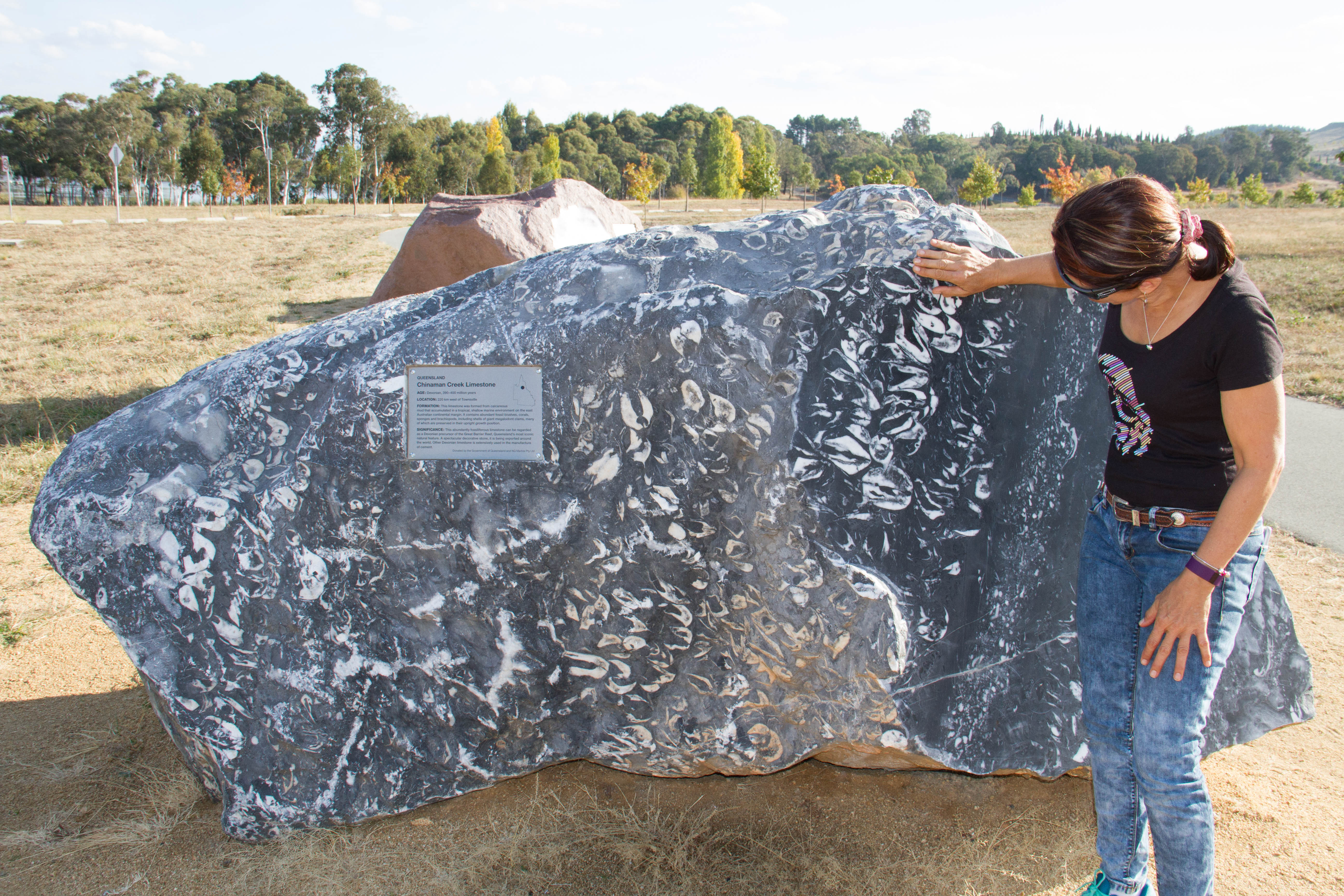
Queensland’s Chinaman Creek Limestone, a Devonian limestone exposed about 220 km west of Townsville.
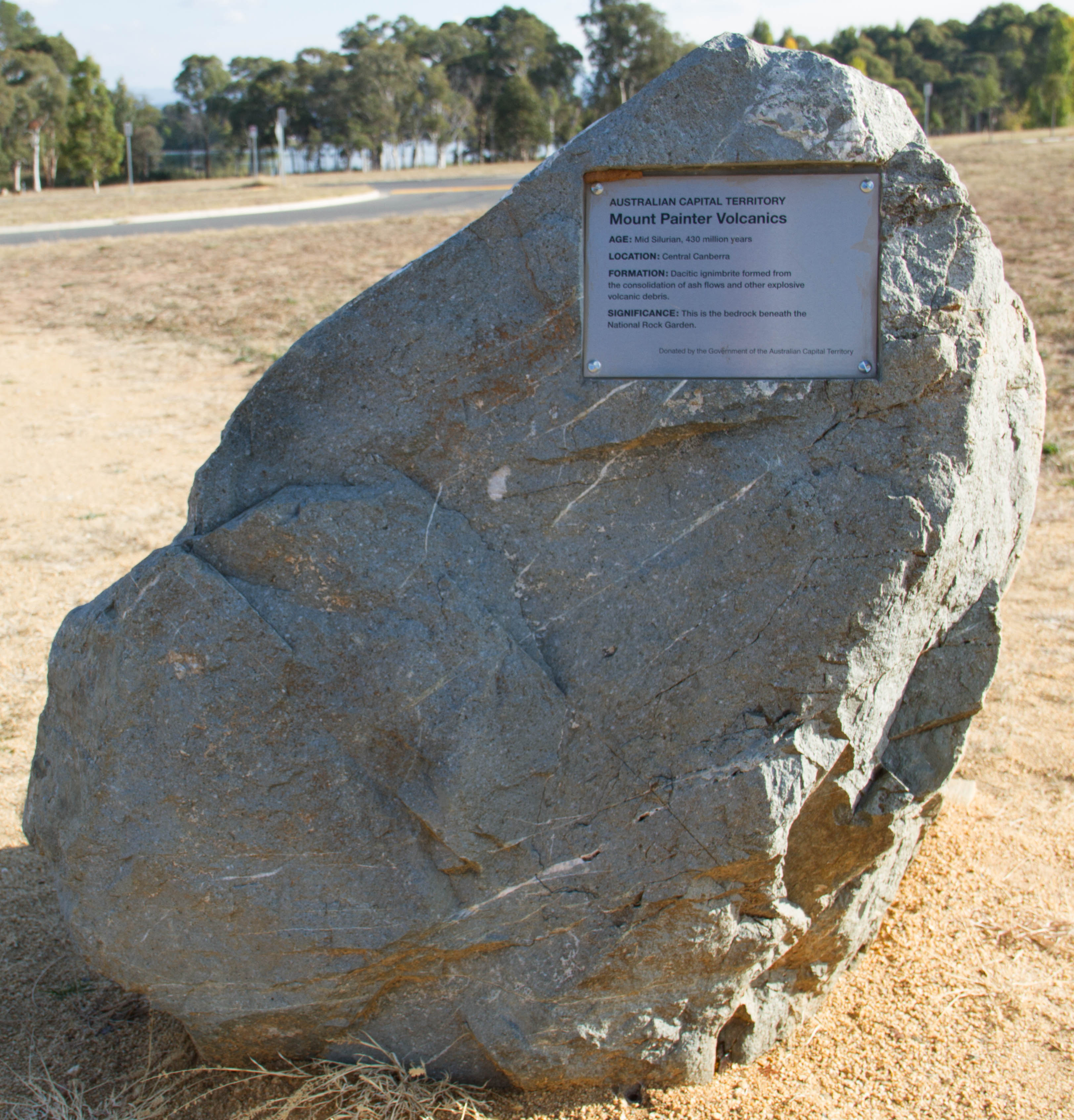
Some local geology – Mount Painter Volcanics from the Australian Capital Territory.
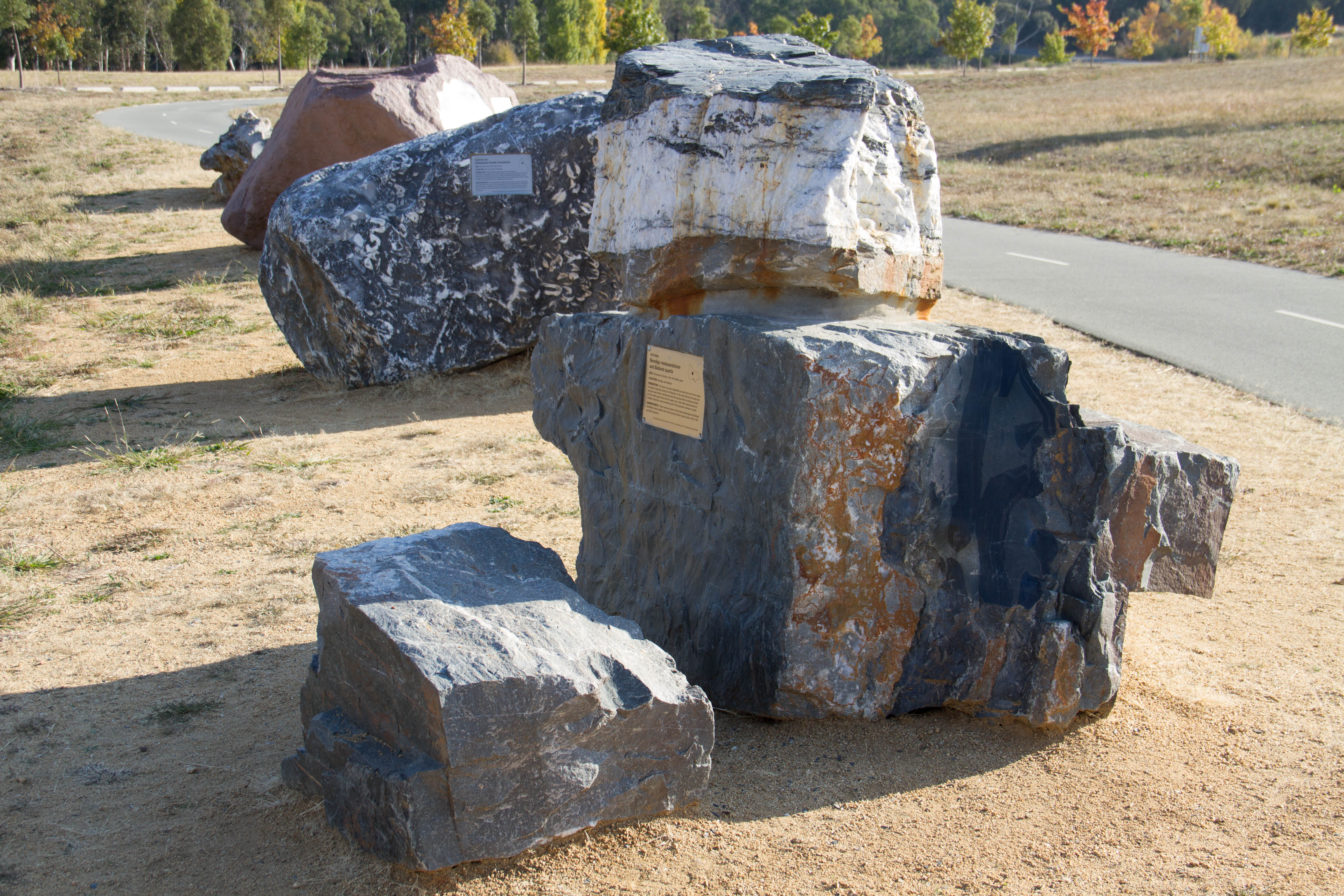
Bendigo metasandstone and Ballarat quartz from Victoria’s goldfields.
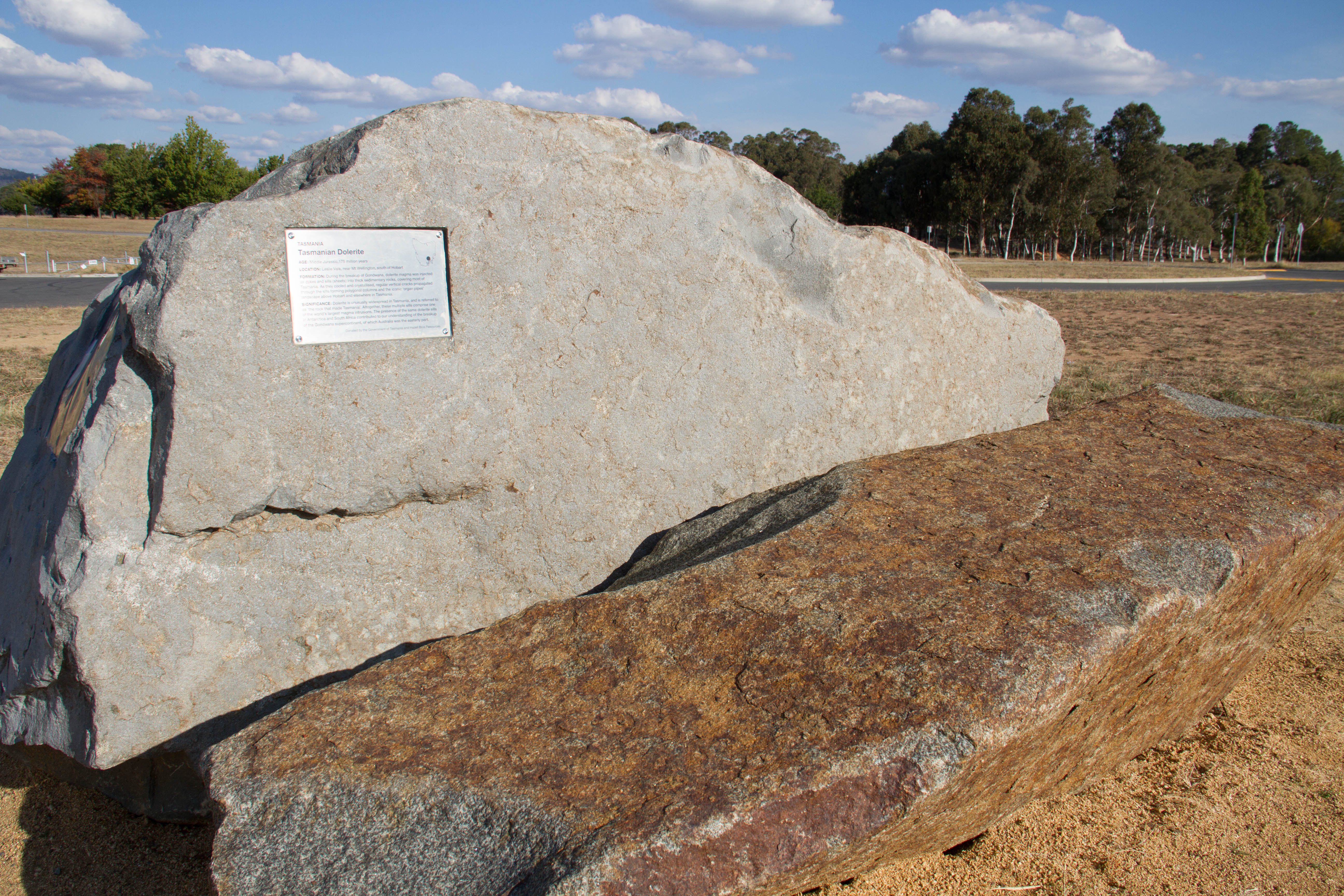
Tasmanian dolerite.
In recent months, the NRG Steering Committee has focussed on developing a plan for an Education Pavilion at the rock garden, to provide a spacious undercover area where visitors and school groups can gather to participate in learning activities with educators and geoscientists and where information on the NRG, as well as rare rocks can be displayed and securely stored. The plan is for a single-story building, 35 m long and about 12 m wide, capable of holding up to two bus-loads of visitors. The building will be oriented to capture a north view across the NRG site, towards Black Mountain.
The Steering Committee is pleased to announce that, in December 2015, the Australian Geoscience Council approved a grant of $30,000 to the NRG which will enable sketch plans for the Education Pavilion to be prepared by well-known architects Taylor Zulaikha Greer (TZG). TZG have worked closely with Taylor Cullity Lethlean (the landscape architects who designed the NRG draft masterplan), on other major projects in Canberra, including the National Arboretum and the National Botanic Gardens.
In January 2016, the three NRG Directors met with TZG Director, Peter Tonkin, as well as representatives of the National Capital Authority (who are responsible for managing Commonwealth land in Canberra), at the site of the proposed Education Pavilion to review design options. It is hoped that sketch plans will be completed by March. This will provide an exciting opportunity for a high-level NRG sponsor to earn naming rights for the pavilion and also enhance earth science education in Australia.
Ken McQueen
AIG Representative
National Rock Garden Steering Committee.
Photos and additional text by Andrew Waltho